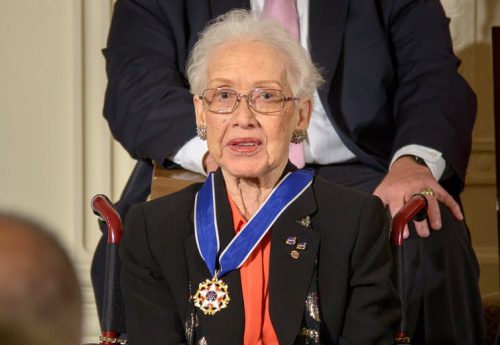She was one of the team of African-American women scientists on whom the movie "Behind the Numbers" is based

By: Monica Grady, Professor of Planetary and Space Sciences, UK Open University
Katherine Johnson, who died recently at the age of 101, was an amazing woman. But until a few years ago, very few people had heard of her and her achievements. She was a mathematician and worked at NASA. But on paper none of these facts would have made her stand out. Add a few more facts - she was a woman, she was black and worked in the US in the XNUMXs and early XNUMXs - and the magnitude of her success becomes clearer.
Johnson's story and significant contributions to the US space program, along with those of Dorothy Vaughn (computer scientist) and Mary Jackson (engineer), were brought to the public's attention by the 2016 book Behind the Numbers by Margot Lee Straley and the film Name.
Rarely have I watched a movie that moved me as much as Behind the Numbers when I first watched it. And I've watched it at least twice since then when I moderated discussions about the importance of the film, from my personal experience working in the space industry. As the film tells the stories of Johnson and her colleagues, it sheds light not only on the development of technology but also on the status of black people in society and the role of women in the workplace and in science.
Catherine Coleman was born in West Virginia and showed at an early age that she was not an ordinary girl. Her ability in mathematics was such that she continued her studies after high school (very unusual for African-American children at that time) and graduated from college at the age of 18. Catherine became a wife, mother and teacher, and her story might have ended there, had it not been for her drive to continue with mathematics.
Human computer
In the XNUMXs the US government continued to develop its flight capabilities, and for that computers were necessary. Not today's super fast electronic technology, or even clunky mechanical machines operated by valves, but people. Johnson became one of a group of human computers who calculated (using slide bars and logarithm tables) the flight dynamics of aircraft to help improve their safety and operation.
In 1958, she joined the then-formed NASA, where she calculated the flight path of the missions of the first American in space, Alan Shepard, and the first American to orbit the Earth, John Glenn. It turns out that Glenn personally asked Johnson to verify the flight path calculated by one of the new electronic computers. She then worked on the Apollo lunar missions, where she helped synchronize the Lunar Module with the Control and Service Module that orbited the Moon, and then on the Space Shuttle program.
Johnson calculated the trajectory of the first manned American space flight in orbit around the Earth. NASA
But Johnson was also a "colored computer" at a time when laws still enforced racial segregation and there was still much opposition to integration and equal rights for non-white American citizens. As such, she had to use the separate restrooms and restaurants assigned to non-white workers.
She was also a woman who worked in a man's world, a world where most workers wore a suit, shirt and tie and came home each evening to find dinner prepared and waiting for them. Catherine had to juggle work and home, like many women today. But her workplace was NASA in the XNUMXs and XNUMXs, where women were inferior. They did not speak at meetings and their names did not appear as notebooks of reports. As shown in the film Behind the Numbers, Johnson demanded to be recognized for her work. And she accepted. In the end.
In her last years, she received many accolades, including receiving the Presidential Medal of Freedom from Barack Obama, and, of course, the publication of Behind the Numbers. But for a long time women didn't have highly visible role models who worked in science or space.
I hesitate to mention my career in an article praising Johnson's achievements. I didn't encounter the same barriers to progress as she did and luckily the people I worked with never looked down on me or ignored me the way they treated Johnson.
And the space industry has come a long way in the half century it has existed. We have laws about equality and discrimination and dozens of programs created to encourage diversity in the workplace.
make your voice heard
Stories like Johnson's need to be told. Where are our role models today? Who are the women who will inspire our female students to become scientists and engineers? For example, in 2019 the BBC published a list of one hundred trailblazing women, of which only four were scientists and only one was an engineer.
Johnson left an amazing legacy: As a mathematician, she helped NASA put people in space. But as an African American woman, her legacy may be greater. She served as a role model, showing that if we have determination, our skills and talent can take us as high as we want to fly.
For an article in The Conversation
More of the topic in Hayadan:
Galois - "This guy only deals with the highest levels of mathematics"
Apollo by-products - NASA list
The computer that made the launch to the moon possible

3 תגובות
I studied the course with Professor Amelia Friedman. Already another era - editor of 2 scientific newspapers and author of 2-3 science books.
I studied her theory in an optimal control course. It is called the theory of the optimal route for the meeting (rendezvous). For less than that or similar to that, people got doctorates and professorships. For example, Dr. Richard Belman received his doctorate in 3 and a half months. Maybe the color got in the way.
One picture is worth a thousand words:
https://www.reddit.com/r/mathmemes/comments/f9xa3o/tribute_to_katherine_johnson/